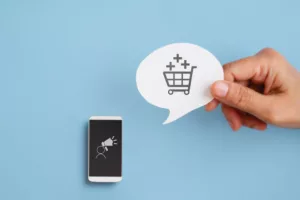In France, brands that focus on loyalty increase their sales by an average of 25%, according to a Custup study. Understanding how to build customer loyalty is therefore a crucial issue for businesses. It is a good way of avoiding dependence on acquisition (the costs are constantly rising). Above all, it’s a sign that the offering is genuinely meeting the expectations of audiences.
Brand marketing efforts must focus on the retention stage. To consolidate the relationship with their customers, brands can rely on an essential tool today: gamification. This marketing technique multiplies interactions and makes them more positive, strengthening brand loyalty.
In this article, we present the 7 levers to understand how to build customer loyalty through playable marketing.
The challenges of brand loyalty
Building customer loyalty is a strategic lever for companies. According to a recent study by INSEE, retaining a customer costs 5 to 7 times less than acquiring a new one.
You can earn up to 25% more revenue through customer loyalty and spend less on acquisition. It is an essential strategy to understand how to build customer loyalty and encouraging their long-term commitment.
In this way, brands that focus on retention no longer rely solely on an audience of customers, but build up a real community. Its members are less likely to turn to potential competitors. They can also become brand ambassadors by recommending the brand to friends and family, or by taking an active part in its communication campaigns (via User Generated Content).
Finally, investing in customer loyalty also stimulates innovation. Loyal customers can provide the company with relevant feedback on its products, inspire it with ideas, and so on. Increasing your retention rate ensures sustainable growth while strengthening the brand’s foothold with buyers who have been won over.
How to build customer loyalty? The key elements
A loyalty strategy is not based solely on competitive prices. Consumers trust a brand and continue to buy from it first and foremost, it offers an enriching, personalised customer experience.
Here are the main levers for strengthening brand loyalty:
- An attractive loyalty programme: brands can offer points and then rewards for each purchase made, encouraging customers to return.
- A regularly renewed offer encourages buyers to stay connected to the brand so they don’t miss out on new products (limited editions, seasonal services, etc.).
- Flexible subscription options guarantee a regular relationship with the brand while simplifying access to its products or services.
- A personalised customer experience (through product recommendations based on customers’ preferences and buying habits) boosts customer satisfaction and the rate of repeat purchases.
- Exceptional customer service (fast, accessible but also proactive) also increases customer satisfaction and reduces conflicts between the brand and its customers.
- Engaging, targeted communication. To build customer loyalty, brands also need to maintain contact with them (via a newsletter or regular posts on social networks). The content shared must offer both relevant resources that promote the customer’s interests and attractive promotions.
- Exclusive experiences reinforce the feeling of belonging to a brand community. The brand community can organise events (online or face-to-face) and offer VIP benefits to its most loyal customers.

Building customer loyalty through gamification
Gamify the loyalty programme to make it more attractive
Example: Galeries Lafayette is using gamification to encourage customers on their programme to buy from the store again. For example, members have to enter a code received post-purchase (by email) to access exclusive games and try to win gift vouchers.
Highlighting new offers through gamified campaigns
Example: Nike has gamified the discovery of its collections via its SNKRS application. Users have to solve riddles or find clues to access limited edition products.
Gamify subscription options to boost retention
In the same way that gamification makes loyalty programmes more attractive, retailers can also boost their subscription offer by making it playable. By offering exclusive challenges or rewards to their subscribers, they can encourage them to move up a level or extend the duration of their subscription.
Example: Duolingo offers a premium subscription with extra features, in which the application includes challenges and objectives to encourage daily learning.
Playable marketing for personalisation
Examples: Sephora uses gamification to collect data on its customers’ product preferences and improve its recommendations. For example, the brand shares a Beauty Profile Quiz that allows users to determine their skin type. Based on the answers given, Sephora then suggests suitable products, boosting customer satisfaction.
Gamifying customer service
Example: Microsoft uses a ranking system to encourage users to answer questions on their support forums. In this way, the technology giant is transforming its customer service into a collaborative experience and offering more tailored responses to its users.
Gamification for better customer communication
Gamification makes every brand message much more engaging and therefore memorable. Customers are no longer simply consumers of content, but become players in their own right.
Example: Netflix shares quizzes and challenges on its social networks. These interactive formats enable them to better engage their community and intelligently promote their flagship programmes.
Offering exclusive gamified experiences to build customer loyalty
Finally, gamification can also strengthen brand loyalty by giving access to exclusive experiences reserved for the most loyal customers. These events can be made much more engaging by using fun mechanisms, such as creative challenges.
Example: Porsche rewards its best customers by inviting them to take part in virtual races with realistic simulations. The best racers are then invited to the brand’s exclusive physical events.
Gamification is a powerful way of building customer loyalty, as it increases the number of interactions and thus strengthens the links between the brand and its customers. To boost your audience’s satisfaction and increase their retention rate, all you have to do is offer them engaging gamified experiences by drawing on our catalogue of playable mechanics!







